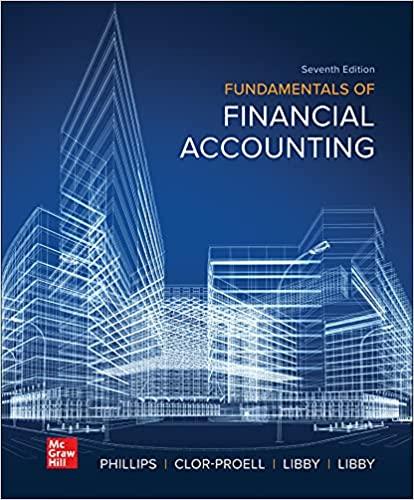You have been assigned to examine the financial statements of Picard Corporation for the year ended December 31, 2020, as prepared following IFRS. Picard uses
You have been assigned to examine the financial statements of Picard Corporation for the year ended December 31, 2020, as prepared following IFRS. Picard uses a periodic inventory system. You discover the following situations:
- The physical inventory count on December 31, 2019, improperly excluded merchandise costing $26,500 that had been temporarily stored in a public warehouse.
- The physical inventory count on December 31, 2020, improperly included merchandise with a cost of $15,450 that had been recorded as a sale on December 27, 2020, and was being held for the customer to pick up on January 4, 2021.
- A collection of $7,700 on account from a customer received on December 31, 2020, was not recorded in 2020.
- Depreciation of $5,550 for 2020 on delivery trucks was not recorded.
- In 2020, the company received $4,450 on a sale of fully depreciated equipment that originally cost $26,200. The company credited the proceeds from the sale to the Equipment account.
- During November 2020, a competitor company filed a patent infringement suit against Picard, claiming damages of $634,000. Picard's legal counsel has indicated that an unfavourable verdict is probable and a reasonable estimate of the court's award to the competitor is $458,000. Picard has not reflected or disclosed this situation in the financial statements.
- A large piece of equipment was purchased on January 3, 2020, for $43,400 and was charged in error to Repairs and Maintenance Expense. The equipment is estimated to have a service life of eight years and no residual value. Picard normally uses the straight-line depreciation method for this type of equipment.
- Picard has a portfolio of temporary trading investments reported at fair value. No adjusting entry has been made yet in 2020. Information on carrying amount and fair value is as follows:
Carrying Amount Fair Value
Dec. 31, 2019 $100,000 $100,000
Dec. 31, 2020 $99,000 $83,000
9.At December 31, 2020, an analysis of payroll information showed accrued salaries of $12,200. The Salaries and Wages Payable account had a balance of $17,100 at December 31, 2020, which was unchanged from its balance at December 31, 2019.
10.An $21,000 insurance premium paid on July 1, 2019, for a policy that expires on June 30, 2022 was charged to insurance expense.
11.A trademark was acquired at the beginning of 2019 for $42,000. Through an oversight, no amortization has been recorded since its acquisition. Picard expected the trademark to benefit the company for a total of approximately 12 years with no residual value.
Assume that the trial balance has been prepared, the ending inventory has not yet been recorded, and the books have not been closed for 2020. Assuming also that all amounts are material, prepare journal entries showing the adjustments that are required. Ignore income tax considerations.
(If no entry is required, select "No Entry" for the account titles and enter 0 for the amounts.)
Step by Step Solution
There are 3 Steps involved in it
Step: 1

See step-by-step solutions with expert insights and AI powered tools for academic success
Step: 2

Step: 3

Ace Your Homework with AI
Get the answers you need in no time with our AI-driven, step-by-step assistance
Get Started


